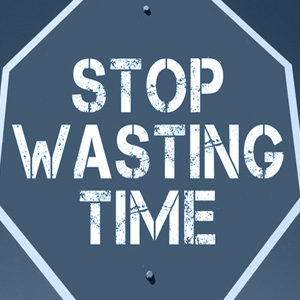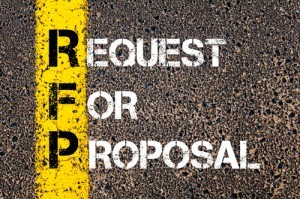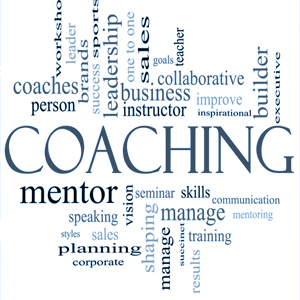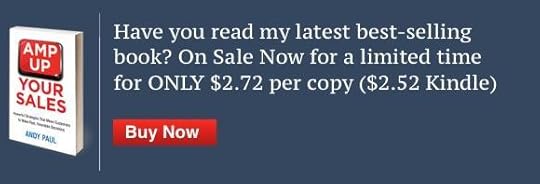Andy Paul's Blog, page 95
September 22, 2015
How Many Sales Touches Are Too Many?
Sales is not about the numbers. Or your process.
It’s about people and their time.
 Are you so consumed with hitting your activity goals, that you forget about the human beings that are the objects of your sales efforts? By this I mean the buyers and influencers that you need to engage and inspire to talk with you.
Are you so consumed with hitting your activity goals, that you forget about the human beings that are the objects of your sales efforts? By this I mean the buyers and influencers that you need to engage and inspire to talk with you.
It’s easy to be lulled into complacency by your numbers. If you make X dials per day and have Y conversations that turn into Z appointments, then you’ve hit your numbers, management will give you a pat on the back and you can go home with a smile on your face knowing that you’ve done a good job.
Or have you?
Recent research into the B2B customer service experience has found that your customers’ tolerance for having to invest their time to make multiple calls, or talk to multiple people, to solve their problems is rapidly decreasing. In fact, this is one of the primary reasons that customers switch vendors.
In other words, if you waste a customer’s time and don’t promptly solve their problem, you are going to lose their business.
Let’s look at sales in the same light. Isn’t sales just another form of problem solving? Why do so many sales reps assume that their prospects have the time, or patience, for a large number of sales interactions to find a solution to their pain point?
In the eyes of B2B buyers, less is usually more. They’re asking sales to help them get their job done with the least investment of their time possible. Yet, most sales reps appear blissfully unaware of the amount of their prospects’ time they consume.
How many sales touches do you have with the average prospect during the course of their buying process? Do you know? Are you counting? Or, just guessing? And, how many of those interactions are delivering something of value that is specific to that prospect and their requirements? In other words, which of those interactions are useful to the buyer and how many are not?
The challenge for sales reps is to stop burdening their prospects with rote, pre-programmed sales interactions.
Set yourself a goal to reduce the number of sales interactions with your prospects that you currently require during the course of their buying process. In other words, what can you do to reduce the amount of time the buyer has to spend with you, either virtually or directly, to move from their initial interest to making a decision to buy your product?
I suggest you start by creating a simple table where you chart the quantity and type of sales touches you have with your prospects during their buying process. Track this for all prospects for 30-90 days depending on the length of your typical sales cycle.
Let’s say for illustration purposes that you average 20 sales interactions with a prospect during a sales process. Ask yourself what you need to do to reduce that number to 18 or 16. Or 10. Or 5.
Pragmatically examine your sales process, your sales skills, your product knowledge and industry expertise. Determine in which of these aspects you need to invest with the objective of improving and enhancing your ability to deliver the sales value that will help your prospects more quickly make a purchase decision.
Here’s the bottom line: every sales touch must be deliberately planned and executed to deliver something of value that enables the prospect to move at least one step closer to making a decision.
If the customer gives you some of their time, what value are they receiving in return for that investment? If you don’t know the answer to that question, you’re just wasting their time. And, you know what happens to sellers that waste their customers’ time.
The post How Many Sales Touches Are Too Many? appeared first on Andy Paul | Strategies to Power Growth.

September 9, 2015
Don’t Sell Like A Politician
Anyone else both fascinated and exhausted by the presidential campaign?
 We’re 14 months away from the 2016 presidential election and it’s already hard to avoid taking my eyes off of the news about the candidates because of the sense that a spectacular train wreck could occur at any time. Again.
We’re 14 months away from the 2016 presidential election and it’s already hard to avoid taking my eyes off of the news about the candidates because of the sense that a spectacular train wreck could occur at any time. Again.
Politics are the ultimate sales job. During the primary season, the candidates engage in hand-to-hand combat in a hyper-intense battleground of competing ideologies (which are not to be confused with actual ideas) to rise above the fray and differentiate themselves from their competitors.
Candidates latch onto a single issue value proposition, which they usually develop from in-depth market research among their most fervent followers, and wield it like a cudgel in every speech and media appearance in an effort to persuade (read as frighten) undecided voters to punch the chad next to their name on a primary (or caucus) day ballot.
However, despite the fact that politics is the ultimate sales job, every time I read about the candidates, I am also reminded about why you shouldn’t sell like a politician.
Here are some anti-political sales strategies to use in your selling:
Don’t pander
Stand for something. And stick to your guns. Shifting your beliefs to pander to an extreme, but vocal, minority might make political sense for a politician. But, it sucks as a sales strategy. Having firmly held beliefs and speaking the truth to the people who make decisions, which includes your prospects who look to you for inspiration and leadership, is essential in sales.
Run toward something; not away from it
Fear can be a powerful motivator among the electorate. But, while scaring the hell out of people may win you the nomination, inspiring voters with a shared vision for a better future wins the presidency. Especially for those candidates that were considered underdogs. JFK, Reagan and Obama were examples of this. The same is true in sales. Fear of missing out may get you in the door with a buyer. But, most B2B decision makers are motivated and inspired to take action by a compelling vision of what they can achieve for themselves and their business.
Have integrity and be truthful.
Politicians knowingly tell outright lies about their proposed policies, and their opponents’ policies, every day. You can’t do that and survive for long in sales. If a sales rep, while talking to a prospect, slammed his competitors in the same manner that politicians confront their opponents, or knowingly misrepresented the capabilities of the product or service he sold, in the same fashion that candidates boldly misrepresent the potential outcomes of their proposed policies, he’d never win the order. Buyers work with sellers that they trust. And they can sense integrity within seconds of you opening your mouth.
Don’t reject data because it conflicts with your beliefs
We live in a era of big data; data that can provide us with a better understanding of our customers, their requirements, how they make decisions, when and why they make decisions. And the data supplies incredible insights into the effectiveness of the various processes we use to market and sell our products. Unlike politicians, who blithely ignore any data and science that contradicts their carefully constructed world view, you can’t afford to do that in sales. Data will tell you what works and what doesn’t in your selling.
Don’t be afraid to admit you’re wrong
Candidates from both political parties are putting forth various economic prescriptions that have conclusively been proven over the past 35 years to be wrong-headed and ineffective. If you’re a sales leader, and you persist in following a sales process or sales philosophy that just doesn’t work, or is ill-suited for today’s buyers and sellers, then you can’t be afraid to admit that you were wrong. You have to be able to set aside your ego and ideology and accept the facts. And then proactively explore new ideas and new methods for achieving your objectives.
Talk less. Do more.
Ralph Waldo Emerson said over 100 years ago “What you do speaks so loudly I cannot hear what you say.” Actions speak louder than words. So does inaction. Voter frustration with elected representatives stem from the perception that politicians today love to preen and posture in front of the cameras, but seem reluctant to actually get their hands dirty and do the hard work of governing (since it involves listening, negotiation and compromise). So it is with sales. Buyers are frustrated with sellers of the “spray and pray” school that talk ad nauseum without saying anything. They want sellers who carefully listen and demonstrate an ability to help them quickly gather the information and insights they need to make an informed purchase decision.
Learn something new everyday that forces you to think
Most politicians seemingly are interested in learning only new things that support their current positions and points of view. Which isn’t really learning at all. Imagine what would happen if a salesperson believed that there was nothing new that he or she could learn about selling. Imagine that salespeople didn’t read sales books, subscribe to sales blogs and podcasts, watch sales videos or invest in any way in furthering their knowledge of sales or their customers. I don’t have to imagine that he or she will soon be looking for a new job.
The post Don’t Sell Like A Politician appeared first on Andy Paul | Strategies to Power Growth.

September 8, 2015
Collaboration Is Easier Than Selling
Collaborating with prospects on their buyer’s journey to help them achieve their business objectives is hard work. But, it’s easier than just selling.
 I’ve written often about the fact that sales is not something that you do to a prospect. It’s a process you go through with a prospect. More than anything, sales is a service that you provide to your prospects.
I’ve written often about the fact that sales is not something that you do to a prospect. It’s a process you go through with a prospect. More than anything, sales is a service that you provide to your prospects.
Done well, selling delivers value to your prospects by engaging them with in-depth conversations that help them develop a better understanding of their requirements and objectives.
Prospects rarely want you to sell them exactly what they think they need. You’re the expert. They want you to help them decide which solution represents the best solution for their requirements.
This collaboration with your prospects is hard work. There’s a reason why the word “labor” is the root of the word collaboration. It’s co-work, or co-labor, that ends up helping your buyer achieve the goals of their buyer’s journey: making a good decision to invest in a solution that helps them achieve their business objectives.
It would be a lot easier to just follow your set sales process and treat all prospects like interchangeable objects. However, successful selling is not about taking the easy path. You may think that you can just copy your sales process from one opportunity to the next. It doesn’t work that way.
Every prospect is unique and needs to be served accordingly.
It starts with the questions that you ask during discovery. They have to engage and maintain the interest of your buyers and challenge their current perceptions of what would be the best solution to meet their needs.
More importantly, your questions have to demonstrate to your prospects that you’re engaged in the collaborative process of helping them move through their buyer’s journey. Too often sales reps have a standard list of obligatory questions that they trot out to ask every prospect. In those cases, your prospects usually know that you’re just going through the motions.
How? Because you don’t have perceptive follow-on questions to ask in response to their answers. Remember, it’s not your first question that demonstrates your value to the prospects. It’s all the questions that follow.
Selling is hard work. Ironically, it only makes it harder if you don’t collaborate with the buyer. The extra work you put into each deal, to engage and collaborate with the buyer to help them define and choose the best solution for their requirements, ultimately will increase your conversion rate. (You’ll win more orders!) And, while that is extra work, hitting your number is a lot easier than taking the “easy” path and not getting the order. After all, chasing quota from behind is no place to be.
The post Collaboration Is Easier Than Selling appeared first on Andy Paul | Strategies to Power Growth.

August 25, 2015
Tips For Small Companies To Avoid The RFP Sales Trap
“Why are you investing your time and money on this RFP?”
 That’s the first question I asked B., a VP of Sales who emailed me last week for advice on a sales opportunity his team was working. His company, B Co, is a bootstrapped SaaS start-up in growing space. The RFP had been released by a very large, very well-known enterprise.
That’s the first question I asked B., a VP of Sales who emailed me last week for advice on a sales opportunity his team was working. His company, B Co, is a bootstrapped SaaS start-up in growing space. The RFP had been released by a very large, very well-known enterprise.
By B’s own admission, B Co’s offering was at a disadvantage from the outset because the two primary competitors had more mature products with a broader set of features. And, he and his team hadn’t worked with the prospect long enough to be in a position to influence the composition of the RFP.
Hence, my question: “Why are you investing your time and money on this RFP?”
The only answer to my question was that the prospect was a household name and the logo would be a good one to capture. Even though B Co. had a minimal chance of winning the business, they were seduced into investing limited company resources by the prospect of working with this large company.
That dream dies hard. And it’s a trap that too many small companies fall into.
Just keep in mind that if you’re a small company, RFPs rarely work to your advantage (unless you’ve had the time and resources to diligently work the account and influence the writing of RFP with your product spec in mind).
Before you invest in responding to an RFP answer the question why you’re investing your time and money to bid at all. And, remember, there are no prizes for second place.
But, if you’re absolutely committed to pursue a prospect who is going to procure through an RFP, then here are a few strategies to keep in mind that can often make a difference.
1. Sell your 1% differentiation.
I wrote an article about how you only need to be 1% better than your competitors to win a customer’s business. If you’re working a prospect that is qualified in every respect, except for the fact that they are going to procure a product like yours through an RFP, then you need to identify what your 1% differentiation is (this could be the one thing that you do that no one else does, or the one thing you do better than every other bidder. ) and convince the customer that they can’t live without it.
This requires significant pre-work with the prospect prior to the RFP being released. You need to conduct an extremely thorough discovery phase. You need to get in front of the right decision makers and influencers develop a very clear understanding of their business objectives. And, you need to quantify, and get their buy-in, on the incremental value that your 1% differentiation would supply.
2. Sell hard on their value driver.
My rule of thumb is that a buyer will cost justify their investment based on less 5% of the features they ask for in an RFP (even though they still expect you to be compliant with the remaining 95%).
Buyers use RFPs to ask for every feature possible and they often require responding vendors to submit a compliance matrix. This matrix will contain all of the buyer’s significant feature and support requirements and sellers are required to indicate whether or not they and their product are in compliance.
The buyer may want you to be compliant with different 200 items, but their decision usually is being driven by just one or two key attributes, features or capabilities out of those 200. The key task for sellers is to get the buyer to tell you which feature(s) will provide the lion’s share of the their ROI. This is the value driver. Discover the value driver(s) and shape your proposal specifically to highlight how you will knock those out of the park. (It will save the buyer a lot of reading!)
I remember one bid I worked on where the compliance matrix was more than 70 pages long with more than a dozen items on each page. I was VP of Sales for a start-up and there was no way we were going to be compliant with every item. Fortunately, I had a good relationship with the ultimate decision maker and over the course of a couple of conversations he revealed what the value driver was for them. In their case it was just one item out of a list of more than 700 features. We completely focused our bid document on our performance, reliability and support as it related to that specific value driver (and largely ignored everything else). We won.
3. Submit a compelling non-compliant proposal.
This is a bit of a Hail Mary strategy. Instead of submitting a proposal for what the customer wants, submit a proposal for what you believe is the best solution for them (short-term and long-term). Of course, this non-compliant approach should be based on some unique value of your product or service.
Challenge the buyer’s paradigm for what they think they want to buy. Force them to stop and think. And, if they come back to you with a question about why you bid what you did, then they’ve opened the door to a conversation that could give you the inside track to winning their business.
There are a couple of potential “gotchas” in this approach. One is that it can slow the whole procurement down while the buyer re-evaluates their requirements. The other is that if the prospect accepts that your non-compliant approach is a better way to solve their problem and meet their business objectives, then they will probably release a new RFP to all of the same bidders. However, the good news is that the new RFP will be built around your product and your unique value proposition.
At one start-up where I was the VP of Sales, we heard at the last minute about an RFP a large, and strategically significant, prospect was going to release. We couldn’t meet their requirements. However, based on one conversation with the buyer we thought that they were fundamentally misguided about how they were trying to solve their problem. Our problem was that we didn’t have the resources to do a full response to the RFP on time. Instead, we submitted a detailed technical brief for a solution that we believed better met their needs. That led to further discussions with the prospect. Ultimately, they withdrew their original RFP and one year later released a new one based on our proposed approach (which we won).
The post Tips For Small Companies To Avoid The RFP Sales Trap appeared first on Andy Paul | Strategies to Power Growth.

August 24, 2015
0%, 50% or 75%? In Sales, It Just Doesn’t Matter.
How far has a potential prospect progressed through their buying process before they engage with a seller for the first time? This seems to have become the most burning question of the season in the sales blogosphere.
 Somehow this whole issue about a prospect’s level of investment in their own buying process before they initially interact with a salesperson has mushroomed into a major “argument” between various factions of sales and marketing “experts.”
Somehow this whole issue about a prospect’s level of investment in their own buying process before they initially interact with a salesperson has mushroomed into a major “argument” between various factions of sales and marketing “experts.”
My response is: who cares? It just doesn’t matter.
Is a potential prospect 0%, 50% or 75% of the way through their buying process when they first interact with a seller? First of all, is there a way to really pinpoint this number? No. And, secondly, does it really matter what the number is? Nope.
There’s research, and arguments of all sorts, being thrown about by each side in this pseudo-debate that attempt to delineate just how educated and empowered potential prospects truly are before they first engage with a seller in the course of their buying process. And, you know what? It really doesn’t matter.
If you want to believe that your prospects had absolutely no knowledge or interest in your product or service until you talked with them, great. But, that’s beside the point. It just doesn’t matter.
The point is that there is no single path a prospect follows that leads them to the point where they intersect with you, the seller. Whether they were dug up by a proactive prospecting call or were a true inbound sales lead, it just doesn’t matter.
The only thing that does matter are the steps you, the sales rep, take to quickly qualify and deliver value to these prospects to help them make faster, favorable decisions once you’ve been given the chance to participate in their buyer’s journey.
No one can dispute that the processes buyers use to gather information and evaluate products and services for purchase have changed. The Internet opened up that door years ago and your prospects have raced through it. The toothpaste has been squeezed from that tube and there’s no putting it back.
While it is true that there have been entire market segments in which the sales rep has been disintermediated from the sales equation (I love that word. It means to eliminate the middleman. In other words, you), that only occurred because sales reps added no value to the customer above and beyond that they found on the sellers’ websites. Who needs a sales person to help them buy pencils, copying machines, cameras, PCs, routers, servers, cars, clothes, shoes, books and so on? Even complex products with high price tags increasingly are being sold online with minimal sales intervention.
The bottom line is that your prospects don’t have an unlimited store of time to invest in buying your product or service. Rather than let you be the pacing item in their buyer’s journey, they will invest their own time to utilize the online resources available to them to help them reach a decision point faster.
However, does this mean that the salesperson is less important or less relevant to the prospect? Only if you let it be that way. Salespeople must be able to add value to the journey the buyer is on, irrespective of how, or when, that journey begins. As a sales person, you can’t control a prospect’s buying process. But, you can control the steps you take to become a value-providing partner to your buyers to accelerate their decision making process.
This means that you must continuously invest in your own development to ensure that you are always a source of the essential sales value your prospects need to make good decisions quickly. In other words, this sales value is information in the form of data, questions, insights and context, that your prospects can’t otherwise find for themselves online.
This is the minimum standard for sales relevance: you have to be a better source of value to your prospects than what’s available to them on the Internet. It’s this knowledge, experience and expertise that keeps you relevant to your prospects. If you don’t work hard to maintain that relevance, then you’ll disappear. Just like the pencil salesperson.
You may be the seller that triggered a prospect to start their buying journey. Or, perhaps the buyer initiated their buying process on their own and connected with you via an inquiry they submitted through your website. It just doesn’t matter.
Because, from that point on, the only relevant question is whether the you can quickly deliver the value your prospect requires in order to make a good decision with the least investment of their time possible. Do that and, more often than not, you’ll win the order.
The post 0%, 50% or 75%? In Sales, It Just Doesn’t Matter. appeared first on Andy Paul | Strategies to Power Growth.

August 11, 2015
If You’re Not Coaching, Why Are You A Sales Manager?
What’s your #1 priority as a sales manager?
 If you’re a sales manager and your number one priority each and every day is something other than coaching the individuals on your sales team to improve their sales productivity and achieve their goals, then what are you doing? Whatever it is, put it on hold and take care of your team.
If you’re a sales manager and your number one priority each and every day is something other than coaching the individuals on your sales team to improve their sales productivity and achieve their goals, then what are you doing? Whatever it is, put it on hold and take care of your team.
Good sales coaching is an integral element of disciplined and effective sales management. Sales management is about the people who work for you. You can’t succeed unless they do. And, “command and control” models of sales management that value process over people are rarely effective.
A commonly cited statistic is that effective sales coaching can result in a 19% improvement in rep sales productivity. So, what steps can you a take to become a more effective sales coach?
A. Invest time to learn about sales coaching
There are several good books on sales coaching that you provide excellent insights into coaching. Start with just one of these and commit to reading it right now. Especially if you’re new to sales management. Check out “Coaching Salespeople Into Sales Champions” by Keith Rosen. Or read “52 Sales Management Tips, A Sales Managers Success Guide” by Steven Rosen.
B. Make certain that each member of your team fully understands your sales playbook.
In this instance, the playbook means your sales reps are thoroughly trained in your sales process and that they are also fully trained to understand how your customers use, and derive value from, your product or service. I like to say that sales reps need to know the answers to the “what” and “how” questions: What are they selling and how are they selling it?
C. Work with each member of your the team to develop their personalized sales plan.
The effective coach makes sure their reps are unambiguously clear about their goals and what they need to accomplish each day, week and month to achieve them. The sales plan is simply composed of the objectives, strategies and tactics that the individual sales rep is going to employ to achieve their assigned goals. People gravitate towards sales as a career because it gives them a sense of being in control of their own destiny. But they aren’t going to achieve their destiny without a road map.
D. Model the skills and sales behaviors you want your people to learn.
This is about the process of molding people into high-functioning, self-sufficient sales reps. Sales is a craft that is essentially learned through an apprenticeship. The most successful salespeople learn their craft by watching their managers (and peers) at work and then integrating the skills and techniques they observed into their own daily selling routines. An effective coach has to be able to demonstrate the skills they are teaching.
E. Get down into the nitty-gritty.
This means conducting regular detailed reviews of the sales opportunities your reps are working; supplying the strategic and tactical coaching to move deals along, as well as providing the wisdom, guidance and counsel a rep needs to motivate them to persevere when the going gets tough. This includes teaching your sales reps when to ask for help.
F. Build a strong level of trust with your team.
How does this trust get established? By being openly invested in each rep’s success to the same degree that they are. Read interviews with players from great sports teams that have won championships and the common attribute they cite for their success is the high-level of trust that the teammates had in each other. In short, they had each other’s back. Have your team’s back.
My first sales manager was Ray. Ray was the most no-nonsense manager I’ve ever encountered. (My hiring interview with Ray lasted 2 minutes and he said all of 12 words. But that is a story for another day.) It was primarily through his coaching that how I first learned how to sell (and be a sales manager.) Everyday we sat down and reviewed each of the deals I was working on. He taught me how important it was to not waste a minute, hour or a day if I was stuck on a deal and needed advice to see what I needed to do next.
I remember coming into the office one morning when I was in the midst of a month-long sales slump and Ray was standing by his desk with his jacket on and the car keys to his big red Oldsmobile jangling in his hand. “C’mon,” he said. Let’s go make some calls.” We spent the morning talking to prospects. Sometimes I’d take the lead and sometimes Ray would take the lead. But I came back from those calls a little bit smarter and a lot more motivated to knock it out of the park.
Being an effective coach means nurturing and being invested in the success of the people who work for you. At the end of the day, that is the highest success a sales manager can achieve. If you’re a sales manager, and you’re not coaching, what the heck are you doing?
The post If You’re Not Coaching, Why Are You A Sales Manager? appeared first on Andy Paul | Strategies to Power Growth.

August 10, 2015
I’m Not Your “Buddy”
Your prospects aren’t your “buddy” either.
 The margin of victory in any competitive sales situation, as well as the margin of defeat, is so slim that even the slightest mistake, or misstep, can spell the difference between gaining your buyer’s trust and confidence, or losing the deal.
The margin of victory in any competitive sales situation, as well as the margin of defeat, is so slim that even the slightest mistake, or misstep, can spell the difference between gaining your buyer’s trust and confidence, or losing the deal.
Unfortunately, I personally am witnessing one glaring mistake being repeated over and over again by otherwise well-meaning sales reps. It may seem trivial on the face of it. But, I can assure you that you shouldn’t ignore this.
The problem is that of forced, or pre-mature, casualness in conversation with prospects. It’s sales reps who end their first conversation with you with “Ok, buddy, thanks for your time.” Or, “Thanks, pal. When should we talk next?”
“Buddy? Pal?” I can assure you that your prospects are not your buddy. An insincere “Buddy” strikes a discordant note that grates like nails on a chalkboard.
Imagine that you’ve just had a promising discussion with a potential prospect. You’re feeling pretty good about the next steps and and then you dissipate the momentum you’ve generated by injecting a false intimacy into the relationship that doesn’t exist. It definitely makes it more difficult to build trust with a prospect because they recognize your insincerity and suddenly put up their defenses in a way that they wouldn’t have been before.
So, why did you say it? If you didn’t mean it, and it was just a throwaway line, wouldn’t it have been better to just to not say it?
This is a guy thing
This is not a generational issue. (All generations seem to be equal opportunity offenders). However, it is a gender issue. It’s a guy thing. And, based on my own recent experiences and observations, it’s getting out of control.
I’m a business owner and I am on the receiving end of a lot of calls from salespeople, most of them sales development reps. Based on my informal tracking, at least 30% of the male sales reps I speak with are guilty of using “buddy,” “pal” or similar term during the first call. (I never realized I had so many friends!)
On the other hand, I’ve never once had a female sales rep say this to me. My wife assures me that is due to women generally having a more highly evolved emotional intelligence that is more attuned to how words are used and received. And, I have to agree.
Habitual casualness breeds habitual carelessness.
Sales is a profession where getting the details right is important. Being successful in sales over a career requires you to be thoughtful and deliberate about the actions that you take each and every time you interact with a potential customer.
If you’re casual, and on auto-pilot, with your choice of words that you use with prospects, then your prospects can’t be faulted for assuming that casualness would bleed over into everything you do.
Sales is a discipline and it’s a craft. It allows for creativity and uniqueness in how you interact with your prospects. However, it’s in the details of how you exercise your craft that will set you apart from your competitors in the eyes of your buyers.
If you knew that the margin of victory in any sales deal was 1%, that you only had to be 1% better than the alternative to win a deal, wouldn’t you willingly consign “buddy” to the dustbin if that helped you win more deals? So, why haven’t you?
Excise Buddy from your life
Here’s a simple way to say goodbye to ‘buddy’ and ‘pal’ and remove them from your sales lexicon. During your next sales call, when you feel that temptation to blast a “buddy” on a prospect, use their first name instead.
First, this demonstrates that you actually were listening when they introduced themselves. Sometimes, in the excitement of actually getting through on the phone to a prospect, or actually getting into to a meet a prospect, it can be easy to forget the name of the person you’re talking with. Instead of saying something like “Ok, buddy, thanks for your time” wrap up with the prospect by saying “Andy, thanks for your time today.”
Second, using the prospect’s name is a small starting step in establishing an authentic connection with the person you are dealing with. At the end of a good sales call, it’s an inclusive gesture and can help to cement the foundation of the relationship you want to build with the prospect.
“Buddy” is anonymous. It’s an unthinking, unconscious, throw-away mannerism that has no value in a sales interaction. And, if it has no value, why are you saying it to a prospect?
The post I’m Not Your “Buddy” appeared first on Andy Paul | Strategies to Power Growth.

July 30, 2015
Sales Tip Video: Sometimes Doing Nothing Is The Best Sales Strategy
As salespeople, we can sometimes be our own worst enemy. We hate silence. Especially radio silence from prospects. The thought of not knowing what is going on and not being in constant contact with them can be anxiety provoking.
Our anxiety often provokes us into picking up the phone to just “touch base” or “check in.” But, touching bases with prospects leads to empty sales interactions that wastes their time. Time that they don’t have to spare (nor do you). Which leads them to think that it’s probably not worth their time to answer our calls.
Wasting a prospect’s time like this is not a winning sales strategy. In fact, it isn’t a strategy at all. It’s just random sales activity masquerading as a strategy. Yes, it may calm a salesperson’s nerves but it isn’t delivering any value to help their buyer move closer to making a decision. In which case, it’s usually better to do nothing at all.
Watch the video below to learn when doing nothing can be the best sales strategy.
Click here to see more videos like this one on my YouTube channel.
The post Sales Tip Video: Sometimes Doing Nothing Is The Best Sales Strategy appeared first on Andy Paul | Strategies to Power Growth.

July 28, 2015
How To Visualize a Successful Sales Call
“You only get one chance to make a positive first impression.”
If you heard that once, you heard it a million times from your mom when you were young.
 It’s not only true in life, but in sales as well.
It’s not only true in life, but in sales as well.
You get relatively few opportunities to interact in a meaningful way with your prospects throughout their entire buying cycle.
Therefore, when you are presented with the opportunity to engage with a prospect, whether it’s your first call or your 10th, they will have the reasonable expectation that they will learn something of value from you about your product or service that they couldn’t have harvested from the Internet themselves.
This means that whenever you interact with a prospect, it is essential to be prepared and leave nothing to chance. In this age when it is so difficult to establish and maintain any meaningful differentiation among products and services, buyers give additional weight to intangible criteria, such as trust, credibility, creativity, and flexibility, in order to make a choice among sellers.
To demonstrate these intangible qualities, make certain that each and every time you engage with your buyer that you have a plan in place to provide precisely the value he or she needs to advance to the next step in their buying process. Just like you, prospects have no time to waste.
I use a simple visualization technique to prepare for each sales call, whether it is in-person, online, or over the phone. Here are three easy visualization steps you can practice yourself and coach your sales people on to improve results.
1. Visualize a Desired Outcome for Each Sales Call
What is the outcome that you envision for the sales call? Based on the value that you will deliver during that call, define your desired outcome in terms of a concrete action(s) your prospect will take to move at least one step closer to making their decision.
2. Rehearse the Steps You Will Take During the Call
What is the process you will follow, or the series of steps you will take, that will result in the outcome you desire? Identify and practice the specific questions you will ask your prospect. Or, rehearse the presentation that you will give. Actually rehearse what you are going to say. Have a co-worker stand in for the prospect and do a short role-play where you practice asking your questions. Or, set aside some time in a sales meeting to make your pitch to colleagues. Get some feedback and make sure that everything you plan to say is clear and easy to understand.
3. Anticipate the Prospect’s Answers and Follow-on Questions
Visualize the “if-thens” that could occur during the sales call. Create a list of potential questions that they buyer might ask. Visualize how you will answer them. Also, envision the comments that your answers could elicit, and how you will respond to those. As I suggested above, role-play with colleagues or your manager. While it is impossible to anticipate with 100 percent accuracy every question your prospect might ask, you can be prepared for most of them.
Remember, success in sales is not driven by being able to think on your feet. Every important sales call requires preparation, not improvisation.
The post How To Visualize a Successful Sales Call appeared first on Andy Paul | Strategies to Power Growth.

July 27, 2015
Use Change to Your Competitive Advantage in Sales
Do you consider the impact of physics on your sales efforts?
 You should evaluate your prospects’ buying processes in terms of Heisenberg’s famous principle of uncertainty. Werner Heisenberg, winner of the Nobel Prize for Physics in 1932, is most well known for his Uncertainty Principle in which he demonstrated that the act of observing or measuring a process will necessarily change its outcome.
You should evaluate your prospects’ buying processes in terms of Heisenberg’s famous principle of uncertainty. Werner Heisenberg, winner of the Nobel Prize for Physics in 1932, is most well known for his Uncertainty Principle in which he demonstrated that the act of observing or measuring a process will necessarily change its outcome.
While Heisenberg arrived at his famous formulation through his work with the behavior of sub-atomic particles, I have always found that a variation of the Uncertainty Principle applies to sales as well.
The Uncertainty Principle of Selling states: The process of selling to your prospect invariably changes their requirements and decision criteria moving forward. The very process of discovery, of helping the prospect define their requirements, and providing the data and information in response to their questions, forces them to re-assess their needs and the criteria that they will use in evaluating sellers and making an informed purchase decision.
In other words, the act of selling to a prospect changes them. And, if you don’t react in response to those changes your chances of winning their business will decrease.
Why “Uncertainty” is important to you
What happens when your prospect learns that your SaaS product provides a feature, and associated value, that they hadn’t anticipated when they first put together their requirements? Or, what happens when your prospect’s expectations for the new machine tool they are looking to acquire aren’t fully met by any of the products that they have evaluated? The trajectory of their buying process will necessarily change.
This should force immediate sales strategy adjustments on your part. Unfortunately, too many sales people fall into the trap of thinking about their sales process, and their prospects’ buying process, as merely rote processes to be blindly followed like the instructions on a shampoo bottle: just lather, rinse and repeat.
Buying processes don’t follow a straight line from Point A to B
Your prospect’s buying process isn’t a linear, inflexible string of events. It changes in response to how you sell to them. Every time you interact with a prospect, and they learn something new about your product or service and what it can do for them, they evaluate their requirements in a different light. Which means that you have to be flexible and extremely responsive in your selling to help them move forward.
In fact, the Uncertainty Principle of Selling reinforces the necessity of being completely and rapidly responsive to your prospects as they gather the information they need to evaluate in order to make a fast, favorable decision. Recent studies have shown that the seller that shapes a prospect’s “buyer’s vision,” the mental image of the value they’ll derive from the product or service they are evaluating, dramatically increases their odds of winning the business.
It’s rarely a straight line from an initial sales call to the buyer’s vision and, finally, to a purchase decision. But, it can be made shorter if you pay close attention to the often subtle changes your prospects are making in their objectives as they move through their buying process.
The key is to use the Uncertainty Principle to your advantage. Plan and implement your account strategy. But be alert and alive to the possibility of change and the opportunities that accompany it.
The post Use Change to Your Competitive Advantage in Sales appeared first on Andy Paul | Strategies to Power Growth.

Andy Paul's Blog
- Andy Paul's profile
- 4 followers






